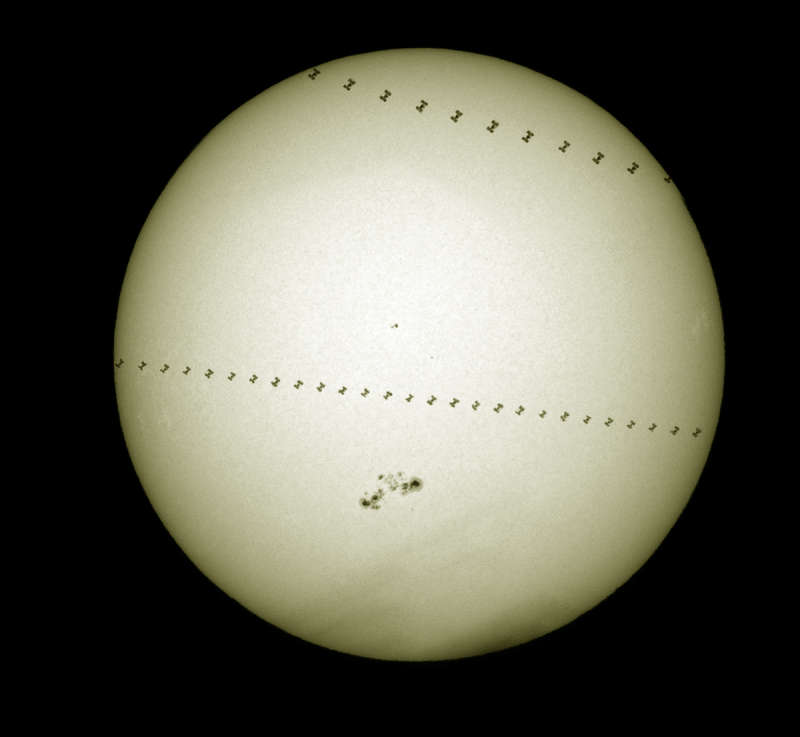Credit & Copyright: Hartwig Luethen
Explanation:
Not once, but twice the
International Space Station
transits the Sun on consecutive
orbits of planet Earth
in this video frame composite.
The scene was captured
on August 22 from a single well-chosen location in Schmalenbeck,
Germany where the ISS created intersecting shadow paths only
around 7 kilometers wide.
Crossing the solar disk in a second or less,
the transits themselves were separated in time
by about 90 minutes, corresponding to the space station's orbital period.
while the large,
flare-producing
sunspot group below center, AR 2043, remained a
comfortable 150 million kilometers away, the distance between camera
and orbiting station was 656 kilometers for its first (upper) transit
and 915 kilometers for the second more central transit.
In remarkably sharp silhouette, the ISS is noticeably
larger in angular size during the closer, first pass.
Of course, tomorrow the Moon will transit the Sun.
But even at well-chosen locations, its dark, central shadow
just misses the Earth's surface creating a
partial
solar eclipse.
1999 2000 2001 2002 2003 2004 2005 2006 2007 2008 2009 2010 2011 2012 2013 2014 2015 2016 2017 2018 2019 2020 2021 2022 2023 2024 2025 |
Yanvar' Fevral' Mart Aprel' Mai Iyun' Iyul' Avgust Sentyabr' Oktyabr' Noyabr' Dekabr' |
NASA Web Site Statements, Warnings, and Disclaimers
NASA Official: Jay Norris. Specific rights apply.
A service of: LHEA at NASA / GSFC
& Michigan Tech. U.
|
Publikacii s klyuchevymi slovami:
international space station - transit - Prohozhdenie - MKS - Mezhdunarodnaya kosmicheskaya stanciya
Publikacii so slovami: international space station - transit - Prohozhdenie - MKS - Mezhdunarodnaya kosmicheskaya stanciya | |
Sm. takzhe:
Vse publikacii na tu zhe temu >> | |
